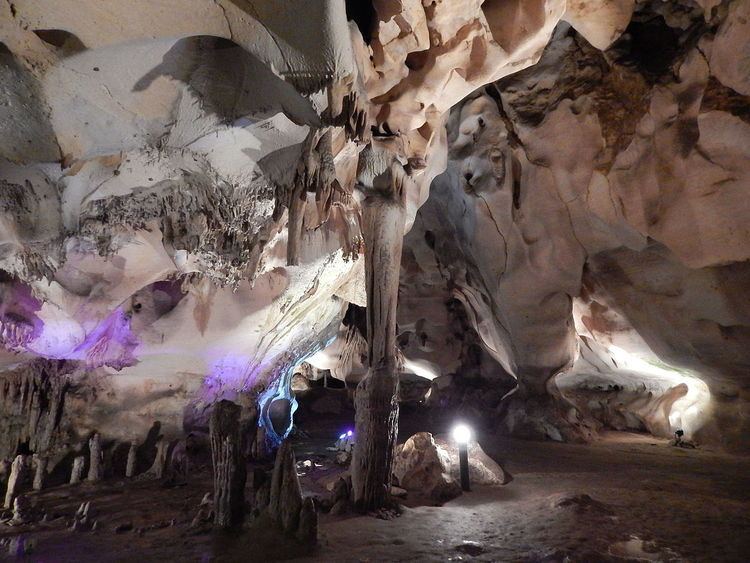Length 13,437 m (44,085 ft) Lighting yes Discovery 1941 | Height variation 45 m (148 ft) | |
 | ||
Show cave opened 1957; 60 years ago (1957) Hours Open today · 10AM–5PMMonday10AM–5PMTuesday10AM–5PMWednesday10AM–5PMThursday10AM–5PMFriday10AM–5PMSaturday10AM–5PMSunday10AM–5PMSuggest an edit Similar Cherven, Rusenski Lom, Rock‑hewn Churches of Ivanovo, Basarbovo Monastery, Bacho Kiro cave | ||
Orlova chuka cave rusenski lom preserve area
Orlova Chuka (Bulgarian: Орлова чука) is a cave situated in the Danubian Plain, north-eastern Bulgaria. With a total length of 13,437 m, Orlova Chuka is the second longest cave in the country after Duhlata. The cave was discovered in 1941 and opened for tourists in 1957. Orlova Chuka is home to 14 species of bats.
Contents
- Orlova chuka cave rusenski lom preserve area
- Art villa orlova chuka video of nature polomie 1
- Location
- Geology
- Discovery and exploration
- Fauna
- References
Art villa orlova chuka video of nature polomie 1
Location
Orlova Chuka is situated on the left slopes of the Cherni Lom river valley. It is located in Ruse Province at 11 km to the east of the town of Dve Mogili, 3 km to north of the village of Pepelina, and 45 km south of the capital of the province, Ruse. The entrance of the cave is 40 m above the river and is accessible through a steep path. The entrance terrace provides a scenic overlook of the Rusenski Lom Nature Park and the rock formations of the river valley.
Geology
The total length of the cave is 13,437 m, which makes Orlova Chuka the second longest cave in Bulgaria after Duhlata. The cave has a constant year-round temperature of 14 °C.
The cave was formed in the late Pliocene and early Quaternary when it used to be the bed of a subterranean river, carved in the local sedimentary rocks of limestone and sandstone. The cave consists of a complex system of tunnels and halls. The ceiling is mainly smooth due to the underground eddies.
The main sights of the show cave are the Concert Hall, the Big Stalagnate, the Little Chasm and the Golemite Sipei Hall, the largest hall in the cave. Another important landmark is the sinter lake Izvorcheto (the Spring) and its white stalagmites.
Discovery and exploration
The cave was discovered in 1941 by the shepherd Stoyan Spasov. Orlova Chuka was opened to tourists in 1952. In 1963 the cave and the adjoining area of 7,5 ha. were declared a natural landmark, and in 1978 it was declared an archaeological monument of national importance.
The cave was intermittently inhabited by humans 200 000 - 40 000 years ago due to the relatively high constant temperature. It the cave were discovered spearheads, flint tools, and axe and pieces of pottery dating from the Chalcolithic. It used to be inhabited by cave bears.
Fauna
Orlova Chuka is home to 14 species of bats that inhabit the cave in different seasons in a colony of about 12,000 individuals. Of these species three are included in the IUCN Red List: the long-fingered bat, the Mediterranean horseshoe bat and the Mehely's horseshoe bat. Orlova Chuka is the most important winter refuge of the Mediterranean horseshoe bat and the Mehely's horseshoe bat in Bulgaria. The presence of the following species was determined by observation and by catching bats with nets:
